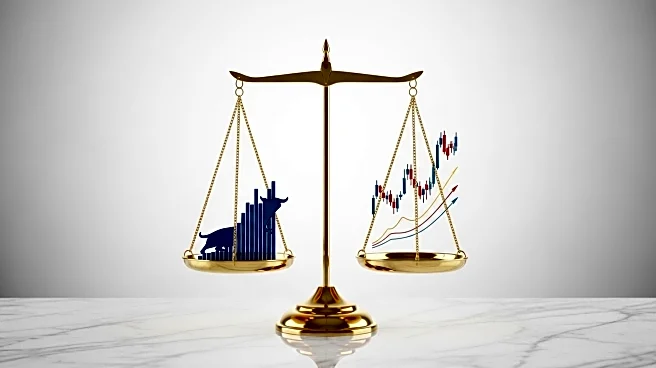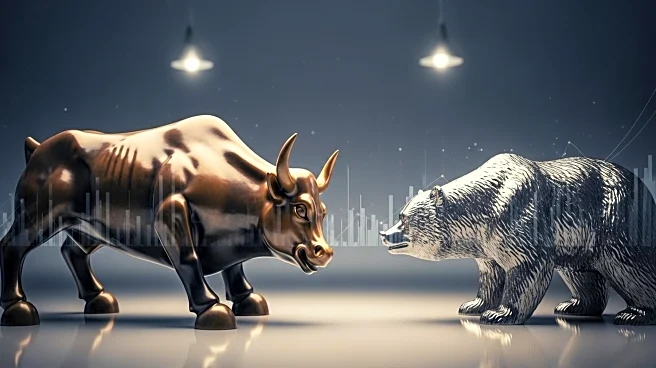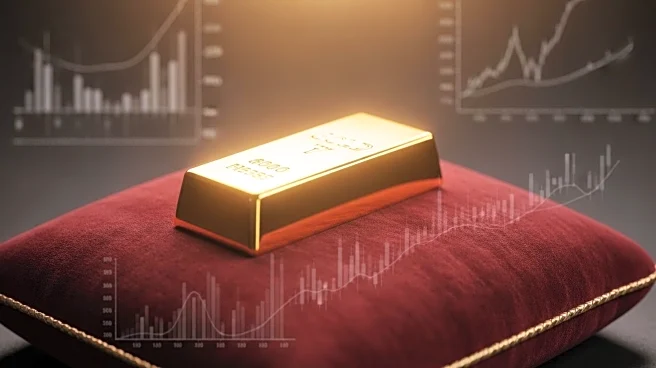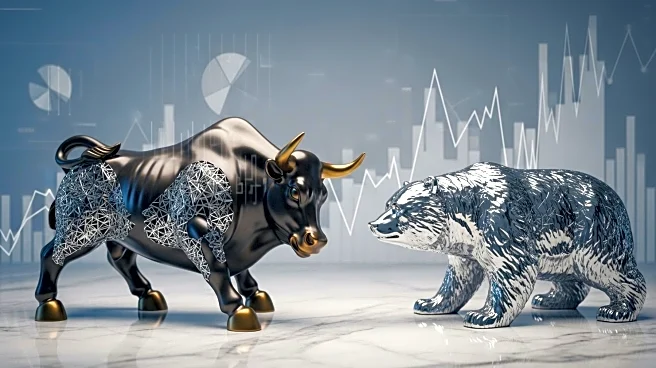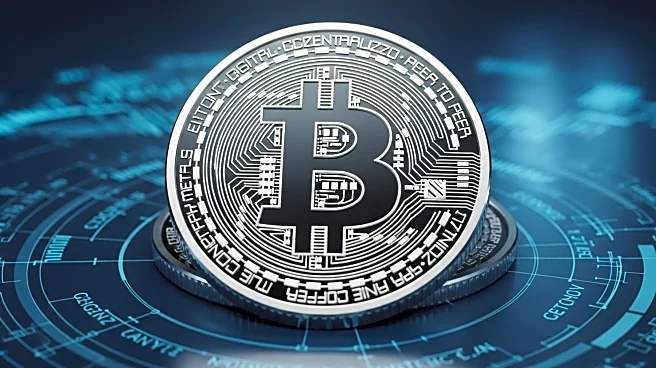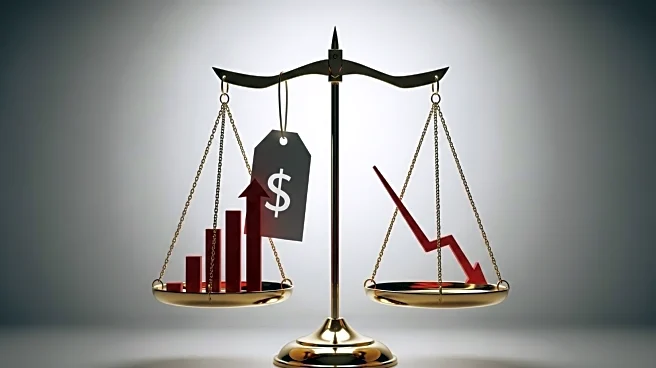What's Happening?
Gold and silver prices have surged as traders anticipate potential interest rate cuts by the Federal Reserve. Silver reached over $40 an ounce for the first time since 2011, marking a 40% increase this year. Gold also approached its all-time high, trading just below $3,500 an ounce. The rise in precious metal prices is attributed to expectations of a rate cut by the U.S. central bank, which could provide further momentum to the ongoing bull run in these markets. This development comes amid growing geopolitical and economic uncertainties.
Why It's Important?
The increase in gold and silver prices reflects broader market sentiments regarding potential monetary policy changes. A rate cut by the Federal Reserve could lower borrowing costs, stimulate economic activity, and increase demand for safe-haven assets like precious metals. This scenario could benefit investors holding gold and silver, while potentially impacting sectors sensitive to interest rate changes, such as banking and real estate. The anticipation of rate cuts also highlights concerns about economic stability and inflation, influencing investment strategies and market dynamics.
What's Next?
Market participants will closely monitor the Federal Reserve's upcoming meetings for any indications of interest rate adjustments. A confirmed rate cut could further boost precious metal prices and influence global financial markets. Investors and analysts will assess the implications of such policy changes on economic growth and inflation. Additionally, geopolitical developments and economic data releases will continue to play a significant role in shaping market expectations and investment decisions.
Beyond the Headlines
The surge in gold and silver prices underscores the ongoing debate about the effectiveness of monetary policy in addressing economic challenges. It raises questions about the long-term sustainability of relying on interest rate cuts to stimulate growth. Furthermore, the increased demand for precious metals may reflect broader concerns about currency stability and inflation, prompting discussions on alternative investment strategies and the role of central banks in managing economic risks.




